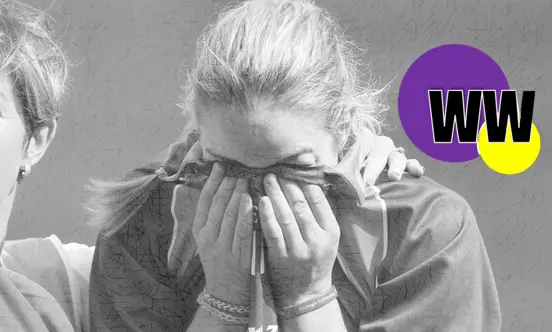Ten years ago this year, more than 33,000 people were in Croke Park to see Wexford claim the All-Ireland senior camogie title for the first time in 32 years after beating Cork in the final.
That statistic remains a record attendance for a camogie final, and it’s estimated that well over 20,000 of the crowd that day were dressed in the Purple and Gold. It’s not all good news though because when Wexford returned to the final two years later, the attendance dropped to just a little over 17,000. The following year in 2010, the crowd dipped below 15,000. When Wexford completed their famous three-in-a-row in 2011, the attendance at the final was 15,900.
Allowing for the fact that the opposition surely brought a few thousand supporters to each of those finals, it means that the number of Wexford fans had also dropped to no more than probably 10,000 to 12,000. Unfortunately, this tells us that approximately half the people who attended that 2007 final decided afterwards that they simply weren’t impressed and/or were not interested enough to return to a camogie final again.
That becomes relevant this week in light of discussion over why it is that Wexford hurlers can have a training camp trip to Portugal, but Wexford camogie players can’t even have a hot meal after training.
The simple fact is that there’s not the same level of interest or support for camogie, therefore there’s not the same level of funding available in the sport, conclusively meaning that the players cannot expect equal treatment.
Now, before I’m accused of going on a sexist and misogynist rant, let me point out that while I am indeed a man, I’m not the sort of man with no interest in camogie and who thinks it’s absolutely dire. I’m involved in training an underage camogie team in my club. I’ve also a keen interest in county affairs, as I’ve a close family connection to one of the players who won All-Ireland titles with Wexford.
Don’t get me wrong though- There have been times when I get frustrated by how things operate differently too. A simple example is how in our GAA club (where I’m also involved), underage membership costs €20, yet in the camogie club, we have to ask for €30. This is simply because we have a smaller player base, but some parents simply don’t understand why Molly needs €10 more than Mikey.
However, I’m also realistic enough to know that camogie – at both club and county level – already does very well from the GAA. In fact, it’s been doing so well for so long that many hardcore camogie people take it for granted. For example, where would camogie teams even train and play if it wasn’t for the GAA? To the best of my knowledge, The Ragg in Tipperary is the only actual camogie ground in the country. Everywhere else, camogie is played on grounds provided by the GAA, almost always for no direct charge.

This is a gesture that many of those hardcore people simply don’t appreciate enough. They may think ‘the facilities are there anyway, and may as well be used’, but pitches and dressing rooms don’t look after themselves. My GAA club, which I will not name, had to spend over €10,000 last year for the clubhouse and pitch maintenance which includes electricity, heating oil, insurance, floodlight repairs, rates, fuel for the mower for example. One fact is that my camogie club wasn’t asked for even €1 of that.
Now you may say ‘but camogie club members support the GAA fundraisers, so they’re entitled to use the grounds’. Okay – so if camogie club members buy tickets for the soccer club’s raffle, should they be entitled to use those grounds too? Of if our GAA players support the parish concert in the church, should they be allowed to use the church for a team meeting? It simply doesn’t work that way.
Using the pitch for free even extends to the county level. When the GAA County Board uses a club’s grounds as a neutral venue for a championship match, they make a contribution to that club afterwards. It’s not much, but it’s at least a token of acknowledgement that there’s a cost involved in making the grounds available, providing showers, and so on. However, when the Camogie Board uses a club grounds like that, there’s no payment made and certainly, this is overlooked by these female equality driven camogie and ladies football players.
Their complaints should be taken up with the Camogie Board, but there’s no point in complaining and asking for something if there’s simply not money to pay for it.
Take for example the lack of hot meals for camogie players that made the news this week. Hot meals at perhaps €10 per person, for maybe 30 people, probably three or four times a week, works out at somewhere around €900 to €1,200 per week, or around €4,000 per month. The Camogie Board just doesn’t have that sort of money to distribute.
Moreover, the Wexford Supporters Club was dragged into the debate this week, but to be honest I don’t know if this criticism was valid. Are they paying €8,000 per month for dinners for the hurling and football squads, but refusing to feed the camogie players? I doubt it.
If they are, the complaint is justified. But if not, then it’s as spurious as the common argument about how camogie players put in equal effort as GAA players and therefore deserve an equal reward. A Junior B hurling side could do just as much training as the Tipperary team, but they still won’t come up to the same standard, still won’t have the same level of support, and still, won’t have the same level of funding behind them.
Like it or not, camogie is a different sport, run by a different organisation which means things will always operate differently. For change to happen, it has to come from within the Camogie Association.
They can’t expect the GAA to solve everything for them.
This article was submitted through the Submit An Article tab, if you would like to respond or do similar please follow the link.
Wexford Weekly



